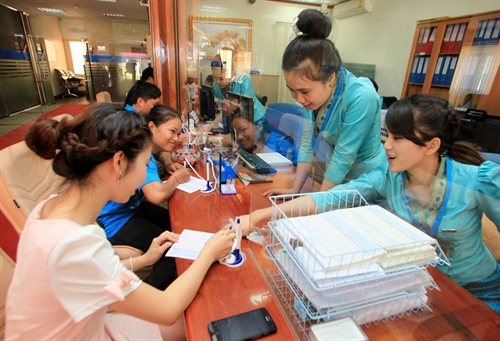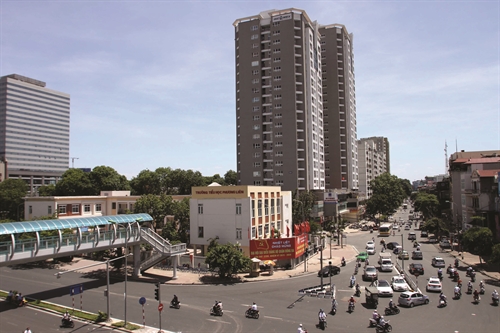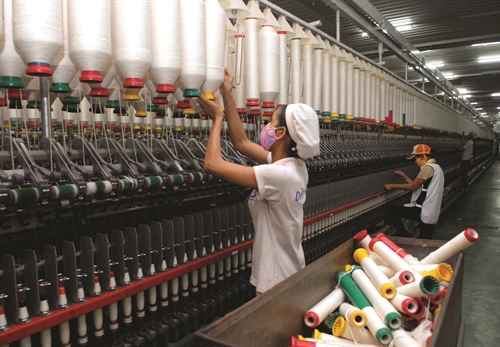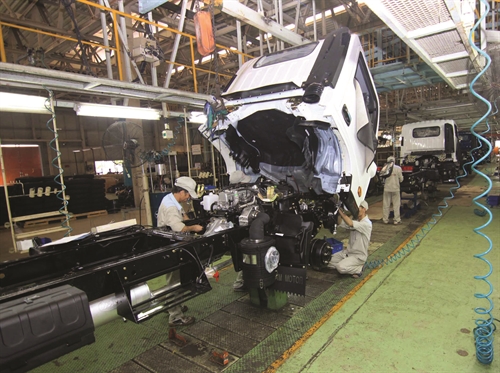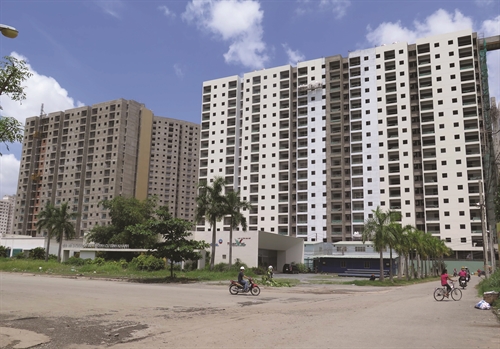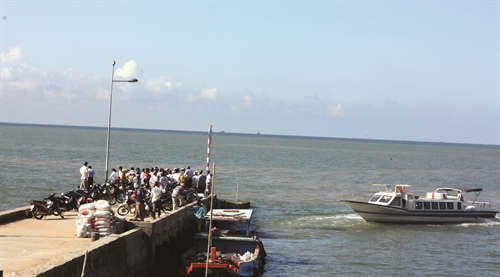Russin & Vecchi
International Legal Counsellors[1]
Vietnam has a specific foreign contractor tax (FCT). The rules describe the tax obligations of foreign entities and individuals who do business in or receive income from Vietnam. FCT legislation has been developed and amended from time to time since it was issued in 1995. The current FCT regime dates from 2014. It clarifies previous ambiguities and introduces new tax rules. For an entity, the FCT is comprised of two parts: Corporate Income Tax (CIT) and Value Added Tax (VAT). The Law on Corporate Income Tax (LCIT) and the Law on Value Added Tax (LVAT) and both form an intricate part of the FCT regime. The government has also issued several circulars to implement and explain these laws. For foreign contractors, Circular 103/2014/TT-BTC on foreign contractor tax (Circular 103) is the most important and amended FCT legislation. Circular 103 took its effect on October 1, 2014.
What is a foreign contractor: Under Circular 103 a foreign contractor is a foreign entity or an individual that does business or generates income in Vietnam on the basis of an agreement between the foreign contractor and a Vietnamese party or between the foreign contractor and a foreign sub-contractor. The Vietnamese counter-parties may include any entity whether state, domestic or foreign-owned, that is registered to do business in Vietnam. A foreign sub-contractor is a foreign entity or individual who, in turn, provides services to a foreign contractor or carries out part of the work of a foreign contractor. For ease of reference, in this article, a foreign contractor and sub-contractor are each referred to as a “Foreign Contractor”.
The FCT also imposes on (i) a foreign contractor which sells goods into Vietnam under an Incoterms delivery clause [with a few exceptions described in Item (a) (goods delivered at a foreign border gate) and in Item (b) (goods delivered at Vietnam’s border gates) below] and which bears the risk in relation to the goods until (the goods are delivered) in the territory of Vietnam, and (ii) a foreign contractor that receives compensation in excess of its actual damages. The rules on calculation of taxes for foreign contractors that are entities and foreign contractors that are individuals are quite different. This article largely discusses the rules that apply to foreign contractors that are entities.
The FCT does not apply to a Foreign Contractor that sells its goods to or provides services in Vietnam in the following circumstances:
(a) Goods delivered at a foreign border gate: The seller is responsible for all liabilities, cost and risks in relation to goods exported to Vietnam and delivered at the foreign border gate; the buyer is responsible for all liabilities, costs and risks in relation to the receipt of goods and transportation of goods from the foreign border gate to Vietnam (even when the seller is responsible for the warranty);
(b) Goods delivered at Vietnam’s border gates: The seller is responsible for all liabilities, cost and risks in relation to the goods until the goods are delivered at Vietnam’s border gate; the buyer is responsible for all liabilities, costs and risks in relation to the receipt of goods and transportation of goods from Vietnam’s border gate (even when the seller is responsible for the warranty);
(c) Services provided and consumed outside of Vietnam: Income derived from services that are provided and consumed outside of Vietnam are not taxed in Vietnam;
(d) Provision of services abroad: A foreign service provider is not subject to the FCT if its services are provided abroad and if it provides the following services: (i) repair of transportation means (aircraft, aircraft engine, aircraft and ship parts), machinery and equipment (including undersea cables and transmission devices), with or without spare parts; (ii) marketing and advertisement services (other than marketing and advertisement through the Internet); (iii) investment and trade promotion; (iv) brokerage for offshore sale of goods or provision of services; (v) training (other than training through the Internet); and (iv) international post and telecommunication that are provided abroad;
(e) Use of bonded warehouses and inland clearance deports (ICD): A Foreign Contractor , which uses a bonded warehouse or ICD as a storage place of goods for the purpose of supporting international transportation, transship, border-transship, or goods storage for other enterprises to process, is not subject to the FCT.
Applicable taxes: The FCT is comprised of two taxes: VAT and income tax. VAT and CIT apply to a Foreign Contractor that is an entity. VAT and Personal Income Tax apply to an individual foreign contractor.
Three methods of tax payment: A Foreign Contractor can pay tax in one of three ways: Declaration Method, Direct Method or the “Hybrid” Method. The Declaration Method applies to a Foreign Contractor if (i) it has a permanent establishment (“PE”) in Vietnam; (ii) the contract has a term of 183 days or more from the effective date of the contract; and (iii) it adopts the Vietnam Accounting System (“VAS”), files its tax registration application with the tax authorities and obtains a tax code. The Direct Method applies to a Foreign Contractor if it fails to meet one of conditions above. A Foreign Contractor may choose to apply the Hybrid Method if it meets all three of the following conditions: (i) it has a PE in Vietnam; (ii) the contract has a term of at least 183 days from the effective date of the contract; and (iii) it maintains accounting records in accordance with the accounting regulations and guidance of the Ministry of Finance of Vietnam.
Subject to the nature of projects and services, a Foreign Contractor may want to opt for an appropriate method in order to mitigate its tax liabilities. The Declaration Method and the Hybrid Method are often applied to a project if there are significant amounts of input VAT that need to be set off against output VAT and if the project may last for a long period of time. We discuss each method and its application.
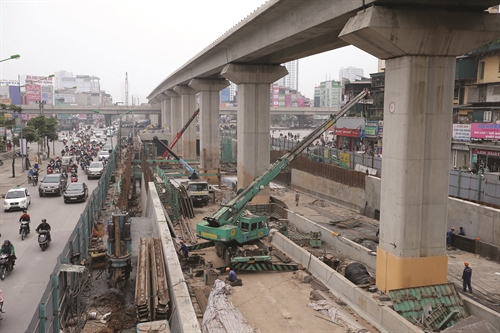 |
| Thanh Xuan road tunnel at Khuat Duy Tien-Nguyen Trai crossroads (Hanoi) under construction __Photo: Huy Hung/VNA |
Declaration Method
The method of FCT calculation which uses the Declaration Method and the resulting tax are virtually the same as the method of calculation and tax paid by a Vietnamese entity registered to do business in Vietnam. The VAT it pays is the same, and the CIT it pays, and which is calculated on net profit, is the same.
(a) VAT under the Declaration Method
VAT payable is calculated and deducted under the following formula:
VAT payable = Output VAT - Creditable Input VAT
Output VAT is the total VAT that a Foreign Contractor collects based on the invoices it issues. More specifically, output VAT is the total VAT imposed on the goods or services it sells. It is computed by multiplying the taxable price of the goods sold or services rendered by the Foreign Contractor to a Vietnamese counter-party by the applicable VAT rate. With respect to imported goods, VAT is computed on the import dutiable price plus import duty plus exercise tax (if applicable), and the environmental protection tax (if applicable).
Creditable Input VAT is the total VAT that a Foreign Contractor pays based on invoices it receives. Creditable Input VAT equals the taxable price of goods sold or services rendered by a selling party to the Foreign Contractor multiplied by the applicable VAT rate. For domestic purchases, input VAT is based on VAT invoices. For imported goods, input VAT is based on the VAT payment documents (which are presented to the Customs Office).
VAT rates differ depending on the types of goods sold and the services provided by the Foreign Contractor. There are three levels of VAT: 0%, 5% and 10%.
(b) CIT under the Declaration Method
CIT is payable in addition to VAT, and it is determined under the following formula:
CIT payable = Assessable Income x CIT rate
Assessable Income = Taxable Income - [Tax Exempt Income + Losses Carried Forward]
Tax Exempt Income is income that is exempt from tax and that is listed as ‘tax exempt income’ in the LCIT. Tax Exempt Income is usually income from business sectors or investment activities that are encouraged, for example, income from cultivation, husbandry or income from performance of contracts for scientific research and technological development, or income from investment in favored geographical areas.
Loss Carried Forward is the loss an enterprise suffers after it has completed its tax finalization for any fiscal year. The losses may be carried forward to the next fiscal year and set off against taxable income in that year. Losses cannot be carried forward for more than five years.
Taxable Income means income earned from production or business activities and from other income generated from capital gains, transfer of a right to contribute capital, or transfer of a right to participate in an investment project, transfer of a concession to explore, exploit and process natural resources or real property transfer, etc.
Taxable Income is calculated under the following formula:
Taxable Income = [Turnover - Deductible Expenses] + other income
Turnover is total revenue, excluding value added tax.
Deductible Expenses are actual expenses related to production or business except for ‘non-deductible expenses’ as defined in the LCIT. To qualify, deductible expenses must conform with LCIT rules, payment must be made via bank transfer (in case of payment in excess of VND20,000,000), and supporting documents are required.
The standard CIT rate is 22%. As from January 1, 2016 the standard CIT rate will be reduced to 20%. The rate that applies to encouraged sectors or locations is lower. For example, companies operating in education and training, health, and environment enjoy a CIT rate of only 10%.
Direct Method
Unlike the Declaration Method, the FCT that is calculated under the Direct Method is determined on the basis of turnover.
When the Direct Method is employed, the law imposes an obligation on the Vietnamese counter-party to withhold the FCT. That is, before making a payment to a Foreign Contractor, the Vietnamese counter-party must deduct the taxes from the payment, which it then pays to the tax authorities on behalf of the Foreign Contractor.
We discuss how to calculate VAT and CIT under the Direct Method.
(a) VAT under the Direct Method
VAT payable = VAT Assessable Turnover x VAT rate as percentage of tax assessable income
Of which:
- VAT Assessable Turnover is the total turnover without deducting any taxes payable. It includes expenses paid by the Vietnamese counter-party on behalf of the Foreign Contractor;
- VAT Assessable Turnover excludes any payment made by the Foreign Contractor to a Vietnamese sub-contractor or a foreign contractor who applies the Declaration Method or the Hybrid Method;
- Subject to goods and services provided by the Foreign Contractor VAT rate as percentage of tax assessable income may be 2%, 3% or 5%.
(b) CIT under the Direct Method
CIT payable = CIT Assessable Turnover x CIT rate as a percentage of taxable turnover
CIT Assessable Turnover is the total turnover, excluding VAT, without deducting any payable taxes. The CIT Assessable Turnover includes all expenses paid by the Vietnamese counter-party on behalf of the Foreign Contractor, but it excludes the payment made by the Foreign Contractor to a Vietnamese sub-contractor or a foreign contractor which applies the Declaration Method or the Hybrid Method.
CIT rate as a percentage of taxable turnover is stipulated in Circular 103. A rate of 0.1% applies to transfer of securities, re-insurance abroad, commission for assignment of re-insurance; the 1%-rate applies to trading, distribution, provision of goods, material, machines, equipment; distribution, provision of goods, materials, machines, equipment accompanied with services in Vietnam (inclusive of in-country import-export and imports); provision of goods under Incoterms; the 2%-rate applies to construction, installation, financial derivative services; the 5%-rate applies to services, lease of equipment, insurance, rig lease, loan interest; the 10%-rate applies to royalty restaurant, hotel and casino management services, etc.
“Hybrid” Method
A Foreign Contractor has another option--the hybrid method--in addition to the Declaration and Direct Methods. By the hybrid method, a Foreign Contractor would pay VAT under the Declaration Method and CIT under the Direct Method.
Three methods, one choice: Each method-Declaration, Direct, or Hybrid-has its own advantages and disadvantages. The options are not open to all Foreign Contractors. Each Foreign Contractor that has a choice will have to decide which method to adopt. As discussed above, only Foreign Contractors that satisfy all conditions to adopt the Declaration Method are entitled to choose any of the methods. Other foreign contractors must adopt the Direct Method or the Hybrid Method (as the case may be).
A Foreign Contractor that chooses to employ the Declaration Method must register with and pay taxes directly to the designated tax authority and must comply with rules applicable to entities using VAS including rules on supporting documents and deductible expenses. If the Foreign Contractor chooses the Direct Method, the Vietnamese counter-party must register with the appropriate tax authority and withhold and pay tax on behalf of the Foreign Contractor. Under this option, and as the tax is levied generally on turnover, the Foreign Contractor pays tax regardless of its profit or loss and regardless of how much input VAT it may set off against output VAT. A Foreign Contractor which selects the Hybrid Method can recover its VAT, it can avoid having to implement the full VAS, but it still needs to maintain accounting records as required by the law.
Payment net of FCT: Foreign Contractors that adopts the Direct Method often request the Vietnamese counter-party to pay any amounts due “net of all taxes”. In such circumstances the contract price is grossed up and the amount withheld actually becomes an expense of the Vietnamese counter-party. This mechanism involves a larger total payment of contract price and FCT. However, there is a benefit to the Vietnamese counter-party if payment is made by the withholding method and the FCT obligation is passed to the Vietnamese counter-party. That is, the VAT portion that the Vietnamese counter-party pays on behalf of the Foreign Contractor is the Vietnamese counter-party’s Input VAT. It may set its Input VAT off against its own Output VAT, thus, effectively, offsetting the VAT portion of the FCT. This effectively lowers the overall net effect of the FCT. However, by paying the net amount to the Foreign Contractor the total gross amount paid by the Vietnamese counter-party will probably be more. The relative advantages and disadvantages of making a payment to the Foreign Contractor net of taxes should be assessed and may be apportioned.
The impact of Double Taxation Agreements on the FCT: The Double Taxation Agreements (“DTA”) which Vietnam has entered into with other countries can have a significant impact on the FCT. Generally, a Foreign Contractor may avoid income tax (but not the VAT portion) being a component of the FCT, if it is from a country that has a DTA with Vietnam and if it does not have a PE in Vietnam. This is because a rule that is provided in most DTAs is that a non-resident company is taxed only in its country and it may be taxed on its business income in Vietnam if it has a PE in Vietnam.
What constitutes a PE may vary in each DTA. Most if not all of Vietnam’s DTAs follow the OECD Model or UN Model DTA which defines a PE as a fixed place of business through which the business of an enterprise is wholly or partially carried out. A place of business must be “fixed”. That means, a particular building or a physical location that is used to conduct the enterprise’s business must be more than temporary.
Although Vietnam’s DTAs employ the same definition of PE, the specific list of what constitutes a PE in each DTA may differ. For example, the DTA between Vietnam and the Seychelles or the DTA with Sweden extend the meaning of a PE to furnishing a service. In this connection, even if the non-resident enterprise that provides services does not have a “fixed” place in Vietnam, the service supplied is deemed to create a PE and consequently the income from that service is taxed in Vietnam. Of course, some other conditions may apply, such as: the service was performed in the source country for a period exceeding six months and by an employee or other personnel.
Some of Vietnam’s other DTAs do not enlarge the definition of PE, for example, Malaysia and France. This means that a Foreign Contractor from those countries that provides services in Vietnam is less likely to have a PE in Vietnam when the service provider is a resident of those other countries and consequently is not taxed in Vietnam.
There is a mechanism in most DTAs that allow a Foreign Contractor to claim a tax credit in its home country for the FCT (income tax portion) it pays in Vietnam owing to the principle of elimination of double taxation which principle is the underlying objective of the DTAs. Of course, a Foreign Contractor that seeks the benefits of a DTA must prove that it is covered by the DTA and must comply with other conditions and procedures in the DTA and with the tax regulations of its home country.
Conclusion: The FCT may be a significant part and component of the contract price if a Foreign Contractor is involved in a large project. Some Foreign Contractors will have choices on which form of FCT they can choose. They will also have options depending on the interaction of the FCT and DTAs. All of this is to say that Foreign Contractors that are subject to the FCT must choose among the options available to them.-
| [1] * VIETCOMBANK TOWER, 14/F 5 ME LINH SQUARE, HO CHI MINH CITY. TEL: (84-8) 3824-3026, FAX: (84-8) 3824-3113. E-mail: lawyers@russinvecchi.com.vn | * HANOI CENTRAL OFFICE BUILDING, 11/F 44B LY THUONG KIET ST, HANOI. TEL: (84-4) 3825-1700, FAX: (84-4) 3825-1742. E-mail: lawyers@russinvecchi.com.vn |
